Thursday, June 30, 2022
This Police Officer's Mission Is To Mentor Civil Service Aspirants
Woman, Lover Arrested For Murder Of Her Aunt, Brother In UP
Hyderabad Man Threatens PM, Amit Shah On Social Media, Arrested: Report
4 Found Dead Inside Abandoned Mumbai Hospital, 4 Suicide Notes Found
Wednesday, June 29, 2022
Light Rain In Parts Of Delhi Brings Relief From Scorching Heat
Webinar: Work smarter, not harder, to give customers what they want

Personalizing your marketing campaigns for one customer is easy, but how about one hundred or thousands of customers across multiple marketing channels?
Work smarter, not harder, by using artificial intelligence (AI) as part of your martech stack and giving your customers the unique experiences they crave.
Register today for “Use Data to Create Next-Level Customer Experiences at Scale,” presented by MoEngage.
The post Webinar: Work smarter, not harder, to give customers what they want appeared first on Search Engine Land.
from Search Engine Land https://ift.tt/rFmgQby
via https://ift.tt/AVFoG8d https://ift.tt/rFmgQby
Telangana Government Disburses Rs 1,820 Crore Under Farmers Support Scheme
Warby Parker dodges 1-800 Contacts lawsuit over search results, website
Online retailer Warby Parker was sued by 1-800 Contacts over it’s use of the latters branded keywords to redirect searchers to the Warby Parker online store. The case was dismissed by a Manhattan federal judge saying that Warby Parkers’ ads are unlikely to confuse potential customers.
The decision. Judge Kevin Castel argued against 1-800 Contacts saying that customers are unlikely to think that they’re buying from 1-800 Contacts when they click on a Warby Parker ad. Castel also said the companies’ trademarks were too dissimilar to confuse contact-lens buyers, who are likely to pay close attention to what they are purchasing and noted that Warby Parker’s name is clearly displayed in the search results and on its website.
Castel added that prospective customers will take the time to figure out that the search results link to Warby Parkers website, and will therefore discern that they are buying from contacts from Warby Parkers website.
1-800 Contacts response. A spokesperson for 1-800 Contacts said after the ruling that the decision by the judge was “inconsistent with several well-established legal principles,” and that the company is “evaluating appropriate next steps, including whether to appeal.”
Sounds familiar. Earlier this year we reported on an attempt by Edible Arrangements to sue Google over theft, conversion, and racketeering. Edible Arrangements lost that lawsuit, but this was not the first case courts heard over trademark and copy issues.
In my own Google search, I was unable to mimic the results that this suit was based on and didn’t find any Warby Parker ads initially. You can read the article and ruling from Reuters here.
Why we care. The dismissal of this case against Warby Parker should concern advertisers who are competing for branded keywords. If you’re facing a similar issue, you can visit the Google trademark help document, but it can be a painstakingly long, and temporary band-aid for a much bigger issue. On the contrary, if you’re using another brand’s keywords in your ad strategy, be careful, as you could see yourself in hot water.
The post Warby Parker dodges 1-800 Contacts lawsuit over search results, website appeared first on Search Engine Land.
from Search Engine Land https://ift.tt/P5IUv0V
via https://ift.tt/AVFoG8d https://ift.tt/P5IUv0V
Tuesday, June 28, 2022
Webinar: Grow revenue streams through web accessibility and compliance
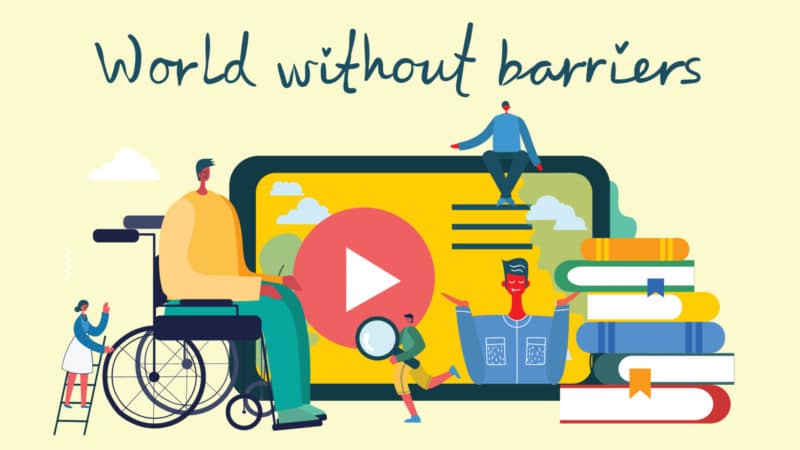
1 out of 4 people in the U.S. lives with some type of disability. Because consumers are online now more than in previous years, your clients’ websites must be accessible to everyone.
It’s not merely a matter of being compliant with the Americans with Disabilities Act (ADA) and Web Content Accessibility Guidelines (WCAG). It’s also good business—because web accessibility can deliver better results and enhance search engine optimization.
Join a panel of agency, compliance and disability leaders to hear more about how web accessibility can work for your agency and your clients.
Register today for “Agencies: Grow Revenue Streams Through Web Accessibility & Compliance,” presented by accessiBe.
The post Webinar: Grow revenue streams through web accessibility and compliance appeared first on Search Engine Land.
from Search Engine Land https://ift.tt/DcvdEzb
via https://ift.tt/NLmM74F https://ift.tt/DcvdEzb
Facebook testing new sidebar, channels for groups
Facebook is testing a new sidebar that helps users find groups quicker and easier. The sidebar lists your groups and their latest activity like posts or chats. You can also pin your favorite groups so you can access them quicker, and even create your own.
The case for groups. Facebook groups aren’t new. Groups are used to get users with similar interests, and hobbies together, in a place where they can collaborate, communicate, sell, or meet in person. This reorganization doesn’t change the functionality of groups or how they work, but reorganizes them within the Facebook platform and offers a few new features.
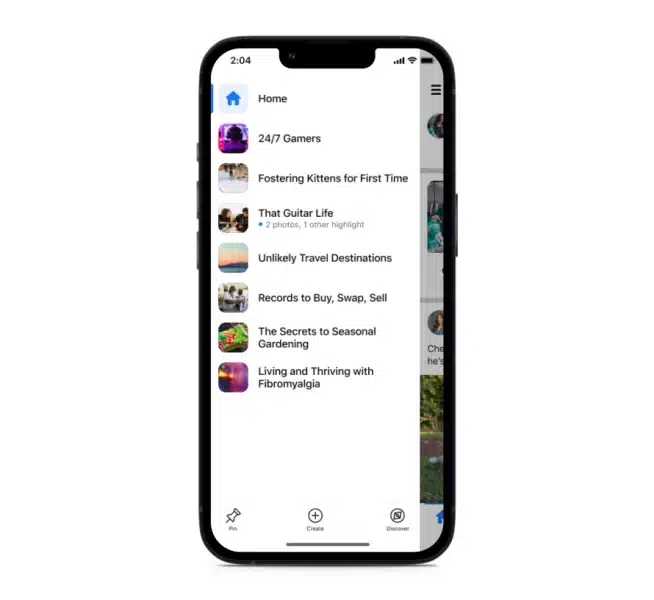
How groups are organized. In the new sidebar, you’ll be able to easily see a menu that takes you to links for events, shops, chats, or other channels within the group.
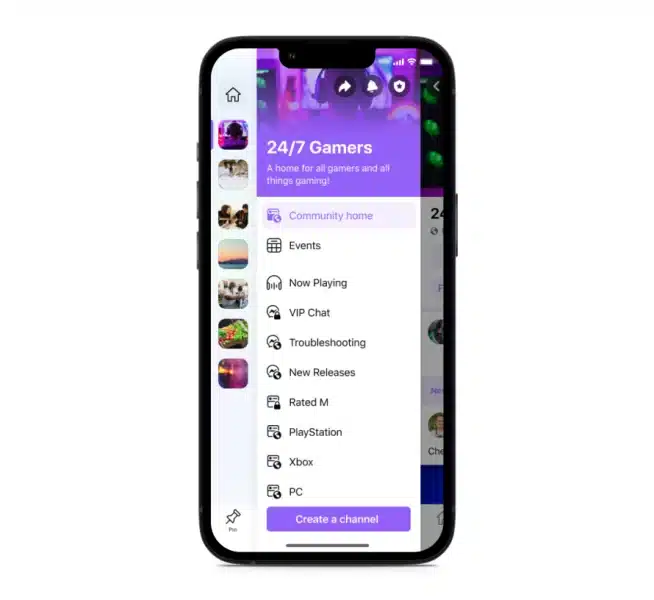
Within their groups, admins can create individual channels to allow smaller, more casual interactions. This is meant to drive deeper discussions and organize the group around sub-topics of interests and demographics.
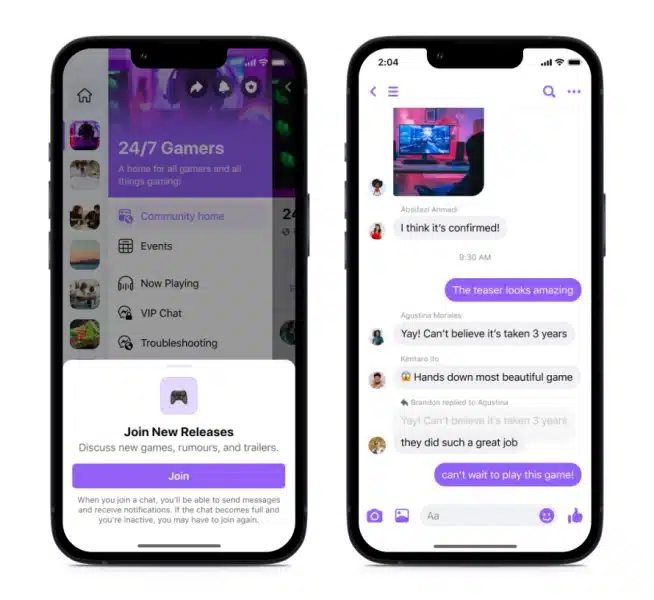
New group features
Community chat. Message and collaborate with other group members in private, smaller channels based on a sub-topic or interest.
Community audio. This allows admins and members to hold audio conversations in real-time.
Community feed. Just like with a normal Facebook feed, the community feeds allow you to browse activity within your selected channel.
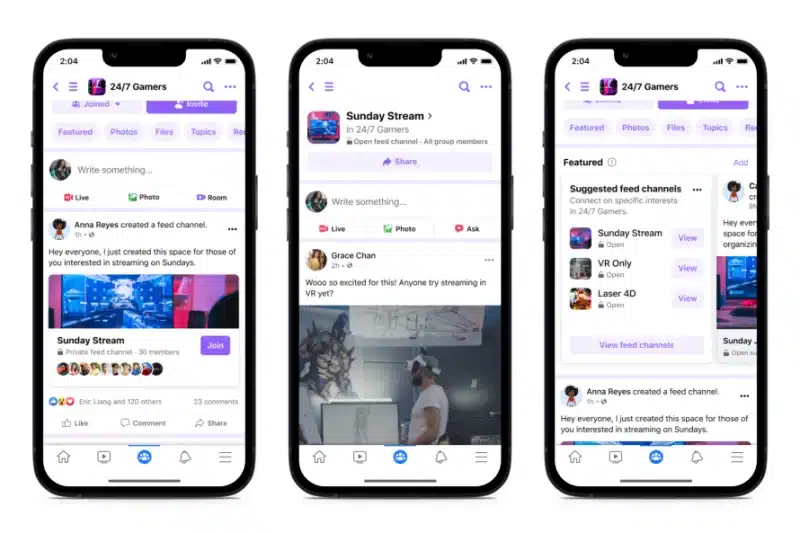
Launch date TBD. There isn’t any information on when these new features will be launched to the public fully. But you can read the announcement here.
Why we care. Businesses with a large Facebook presence can take advantage of these new features and create groups around their product or service. There’s no guarantee they’ll result in any measurable success, but creating a community around their brand may be a way to keep people engaged.
The post Facebook testing new sidebar, channels for groups appeared first on Search Engine Land.
from Search Engine Land https://ift.tt/JG2ANu3
via https://ift.tt/NLmM74F https://ift.tt/JG2ANu3
2 weeks until the 2022 Search Engine Land Awards Early Bird Deadline… enter now!
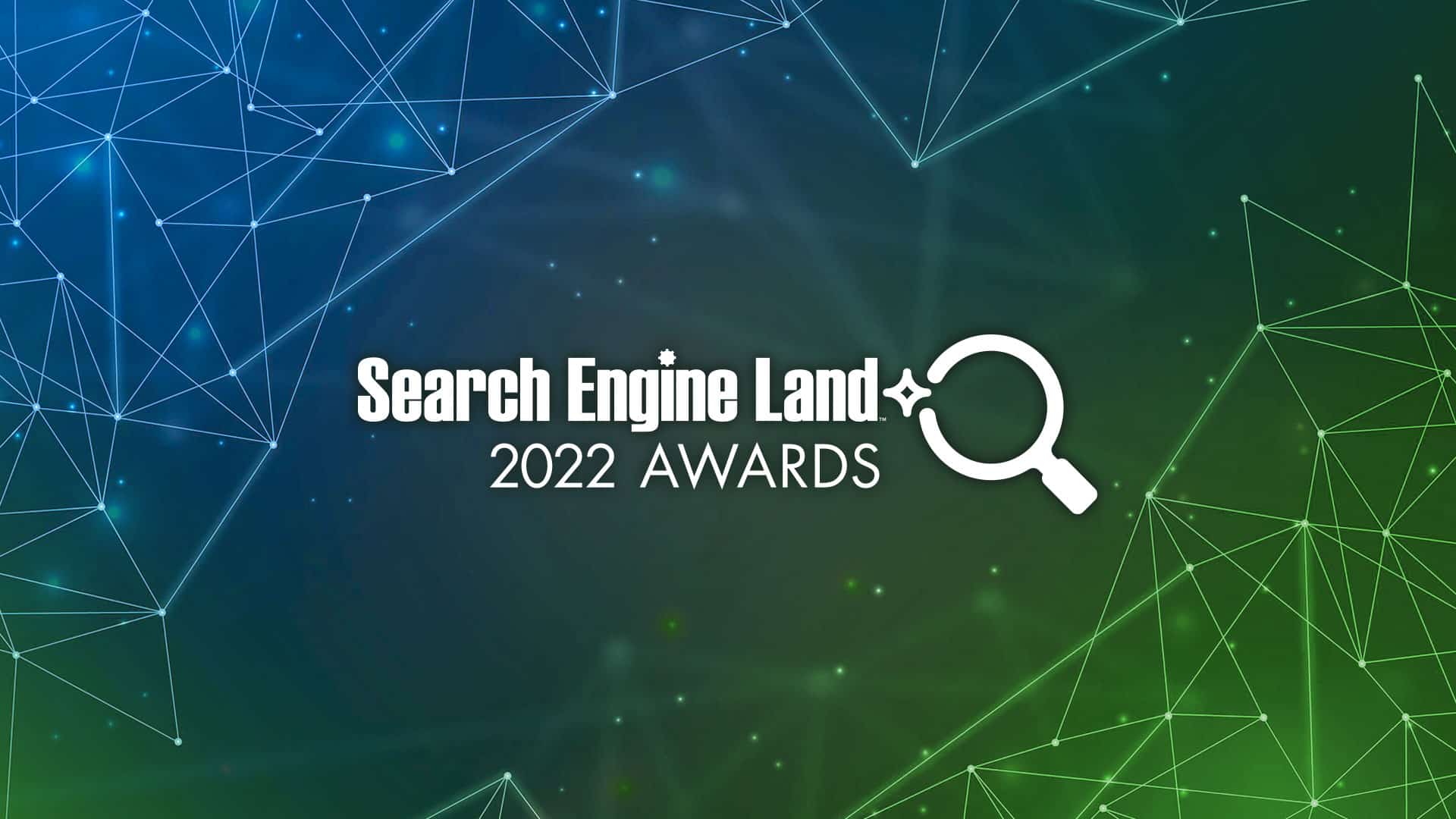
Your opportunity to earn industry-wide recognition, boost company morale, generate new business, and showcase your company’s outstanding achievements is here: Enter the 2022 Search Engine Land Awards now!
Early Bird rates expire in two weeks… submit your application by Friday, July 15 at 11:59pm PST to save $100 off standard rates (per entry!).
Join the esteemed ranks of past winners, including:
- Wiley Education Services (In-House Team of the Year – PPC)
- Rocket Agency (Best Integration of Search Into Cross-Channel Marketing)
- Primal (Agency of the Year – SEO)
- Schneider Electric’s Danita Smith for Search Marketer Of The Year
Check out the full list of 2021 winners here – and all of the available entry categories.
And last, but certainly not least, say hello to your 2022 Search Engine Land Awards judges!
Winners will be announced on October 17 in exclusive coverage on Search Engine Land – the industry publication of record.
Take the first step now by creating your account and exploring the application process. If you have questions, please reach out to us at awards@searchengineland.com.
Best of luck! We look forward to your submission!
The post 2 weeks until the 2022 Search Engine Land Awards Early Bird Deadline… enter now! appeared first on Search Engine Land.
from Search Engine Land https://ift.tt/NDOYqHA
via https://ift.tt/NLmM74F https://ift.tt/NDOYqHA
Yoast SEO Premium now offers IndexNow
Yoast SEO, one of the more popular SEO plugins for WordPress, has finally adopted IndexNow, the Microsoft backed protocol to submit content to search engines. This is available in the premium version of Yoast SEO version 19.2, the company announced.
What is IndexNow. IndexNow provides a method for websites owners to instantly inform search engines about latest content changes on their website. IndexNow is a simple ping protocol so that search engines know that a URL and its content has been added, updated, or deleted, allowing search engines to quickly reflect this change in their search results. The co-sharing of IndexNow went fully live in January 2022.
Integrations. Why Microsoft built its own plugin for WordPress sites to use IndexNow, Yoast decided to build it in to its premium plugin. Why did Yoast add it now? “The latest change to the protocol is the second significant development that made us change our minds about IndexNow. The IndexNow team changed the endpoint of the API from pinging each individual-supported search engine to a single API managed by the protocol. This means that sites only have to ping a single site, making the process much more efficient. All of this fits into our view of a sustainable crawling and indexing solution, so now is the time to implement IndexNow with a new integration in Yoast SEO,” the company explained.
What is IndexNow. IndexNow provides a method for websites owners to instantly inform search engines about latest content changes on their website. IndexNow is a simple ping protocol so that search engines know that a URL and its content has been added, updated, or deleted, allowing search engines to quickly reflect this change in their search results.

Google support? Nope, not yet. Google last year said it was testing IndexNow but since then has not said much about IndexNow. There have been some rumors that Google would not adopt this protocol but as we have seen in the search space, things change fast and often.
Why we care. Like we said before, instant indexing is an SEO’s dream when it comes to giving search engines the most updated content on a site. The protocol is very simple and it requires very little developer effort to add this to your site, so it makes sense to implement this if you care about speedy indexing.
Now, if you have WordPress and use Yoast SEO premium, you can easily active IndexNow for your site.
The post Yoast SEO Premium now offers IndexNow appeared first on Search Engine Land.
from Search Engine Land https://ift.tt/LkYD8AV
via https://ift.tt/NLmM74F https://ift.tt/LkYD8AV
Monday, June 27, 2022
Don't Waste Your Vote On Congress: Asaduddin Owaisi In Madhya Pradesh
2 Arrested For Allegedly Poisoning Of 9 To Death In Maharashtra's Sangli
What to do if you’re negatively impacted by a major algorithm update
“Not all Google updates are equal,” said Glenn Gabe, SEO consultant at G-Squared Interactive, in his presentation at SMX Advanced. “Google pushes thousands of changes per year, but some are small and some are large.”
Whenever a new Google algorithm update is announced, SEOs often spend a lot of money, time, and resources optimizing their sites. And while this can be a good thing, as it helps improve these properties, it can also distract marketers from higher priority tasks when the update is overhyped.
For example, many sites worked heavily on improving Core Web Vitals even though the page experience signal is lightweight (more of a tiebreaker). Gabe showed examples of sites that saw no movement at all when their CWV scores were “poor” and “good”.
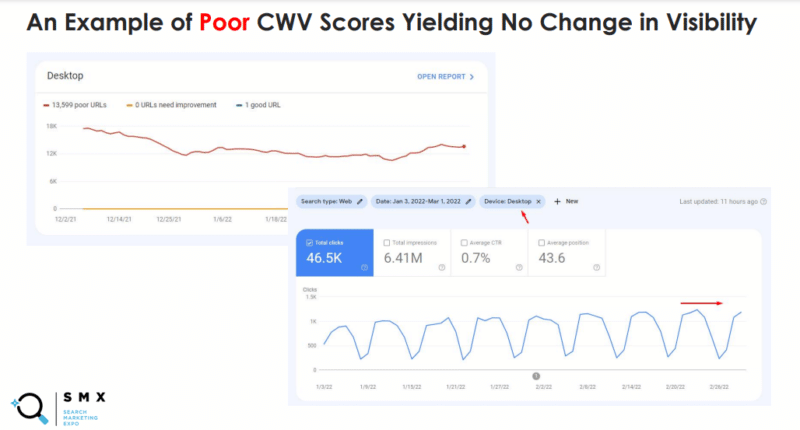

To properly address these updates — and discern what impact they will have — Gabe offered SEOs a few tips that can help them get to the heart of the issue.
Don’t jump to conclusions
Any major drop in rankings/visibility following a Google update will undoubtedly spur many SEOs to action. But, to avoid wasting too much of your valuable time and resources, Gabe recommended getting all the facts in place before jumping to conclusions.
“Avoid the knee-jerk reaction when rankings drop,” he said. “You might need to [make changes], or you might not need to. A drop during a major algorithm update could be due to relevancy adjustments, intent shifts, or overall site quality problems.”
“All of these are very different, so don’t just charge ahead,” he added.
Gabe suggests marketers create a delta report to analyze these changes. This type of report will detail changes in your top landing pages and queries, allowing you to pinpoint those that have dropped during significant algorithm updates. It can also reveal the root cause of the drops and help teams determine the next steps.
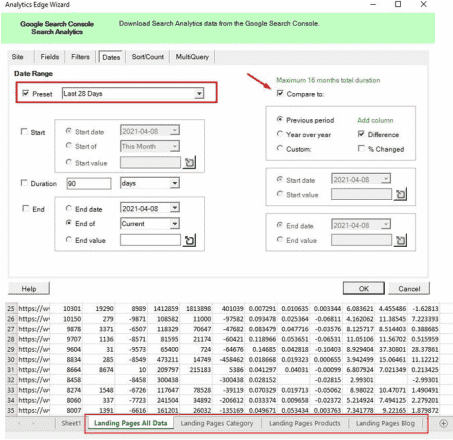
“This is quick, easy, and packed with punch,” he said. “It can reveal a lot of information.”
Determine if there are site quality issues
Sometimes visibility changes following a Google update stem from a quality issue with your site, rather than a change in the algorithm or new competitors.
“If you determine this is the case, there’s good and bad news,” Gabe said. “You can address those problems and see recovery eventually, but it takes significant work over the long term. You will typically not recover quickly — it’s usually months of hard work.”
Gabe said that when addressing these quality issues, site owners should analyze their sites through the lens of broad core algorithm updates, then work to improve content quality and user experience. This means reviewing potential technical SEO problems that could be affecting site quality as well.
“As Google’s John Mueller explained, when you think about quality, it’s not just about content,” said Gabe. “It’s not just about the text on a page, so don’t just focus on what people are reading.”
Pay attention to E-A-T
“E-A-T, or expertise, authoritativeness, and trust, is super-important,” said Gabe. “You could think of Google’s algorithm like a human who’s asking if the [site] creator has expertise on a topic. You have to look at your content objectively.”
Because E-A-T isn’t a score or scale, it’s not always easy determining how well your site embodies its principles. Yet Google’s documentation has highlighted its importance — especially when future-proofing sites for algorithm updates. So, SEOs should ensure they’re adhering to its standard.
When it comes to improving E-A-T after a ranking drop, many SEOs focus on improving content quality and thoroughness, which are incredibly important. But, as Gabe noted, authoritativeness is also heavily influenced by links and mentions from authoritative sites.
“If you do the right things content-wise and build trust with your audience, links and mentions from well-known sites could help from an E-A-T standpoint,” he said. “It’s not easy to fix this problem if you don’t have a lot of authority, but you can work at it over time.”
“It’s really important to identify, plan and execute changes to improve the site overall,” he added.
Watch Glenn Gabe’s full SMX Advanced presentation
Not registered for SMX Advanced? Get your free pass here.
Already registered for SMX Advanced? Log in here.
The post What to do if you’re negatively impacted by a major algorithm update appeared first on Search Engine Land.
from Search Engine Land https://ift.tt/2JDaZRB
via https://ift.tt/nIFJeZ5 https://ift.tt/2JDaZRB
21 ways to keep your marketing team productive
When you have a productive team, you’ll have happier clients. And happy clients equate to sustainable business growth, which keeps your team employed and equally happy.
The problem is many marketing leaders were trained in archaic productivity techniques, such as meeting madness that can quickly drain the creative air out of the room, or non-stop daily nagging via Slack.
I’ve also witnessed many clients implode due to a lack of focus on productivity measures – not only within their in-house marketing departments but across their entire staff. This is a major downfall for agencies like mine – because of their lack of productive habits, they failed internally, and I lost a client. This lack of productive discipline hurts hundreds of agencies across the world.
Old habits die hard, especially when productivity comes into play.
So whether you’re leading a team of writers, SEOs, or social media influencers, these productivity hacks will help your agency succeed.
And the more you repeat good habits, the stronger you can build on these, making you and your staff outrageously productive.
With that said, here are 21 tips to keep your marketing team – or any team – productive.
1. Know the role
One of the main productivity issues I’ve seen across hundreds of agencies and companies I’ve worked with over the past two decades is the lack understanding roles.
Undefined roles and responsibilities can result in leaks in your project management funnel, where certain deliverables are not met, or clients are not given the required attention.
On the flip side, leaders have a natural impulse to put more responsibility on their most productive staff, creating bitter resentments between staff members and management.
To avoid these issues, it’s essential to define your work process as a company and clearly delegate roles and responsibilities to staff. Consider even minute details like administrative work, who takes leads on projects, and who needs to do the grunt work.
2. Leverage your team’s strengths
With various roles and responsibilities defined, you must put your team in the best position possible to succeed. Clearly, someone with little knowledge of SEO or writing will struggle in those roles, dragging down your business.
So if someone is better at client communication than one of your SEO associates, consider making them responsible for client relations.
However, no agency is perfect.
Outsource your weaknesses. Hiring freelancers or white labeling services is a great way to fill labor gaps without overwhelming your team or hiring new individuals.
Everyone has different strengths and weaknesses.
Your job as a leader is to put these individuals in the best position possible to succeed.
Capitalize on your team’s strengths. Delegate the rest.
3. Partner ownership
Because your team will have a diverse set of strengths and weaknesses, it’s common for some employees to at least feel like they are taking on more responsibilities than others.
Therefore, to prevent any sort of hostility and to incentivize greater production, it makes sense to tie compensation to productivity.
There truly is no greater incentive at a workplace than to base pay on performance. But better yet, give workers the freedom and flexibility to work on their schedule (including remotely) to save money and also save your employees their time.
4. Minimize meetings; prioritize all
Meeting mania – many managers love it, but employees hate it.
There is no bigger impediment to the workday than taking a big chunk of time (especially in the mornings when people can be in full creative mode) to talk about strategy.
Cut out wasteful meetings, but make the most of the meetings you do need.
Apply these productivity hacks to meetings to ensure that you and your team are as productive as possible:
- Set a strict time limit (I keep meetings under 20 minutes as much as possible).
- Create a plan beforehand to keep the discussion on point.
- Share the agenda to prepare questions and remarks ahead of time.
- Explain important topics as thoroughly as possible to avoid doing the same later.
- Consider conducting meetings at lunch or during walks to leverage downtime.
5. Structure your day strategically
Have you ever noticed that you tend to be more productive in the morning, even without a cup of coffee? This is because, for the average adult on a normal schedule, your energy levels naturally spike shortly after you awake due to your circadian rhythms and cortisol levels.
Thanks to our agrarian roots, this was the time of day when you would typically go out and do manual labor, so our bodies created a little internal alarm clock to wake us up.
For this reason, I always do my most creative work such as writing and strategy planning, which requires lots of focus, early in the morning. You can also plan out tasks based on your general level of alertness.
For example, many of us experience a second wind mid-afternoon. So by performing essential tasks when we’re most alert and mindless tasks when we are crashing a little bit, you can get remarkably improved productivity without downing a couple of espressos to stay focused.
6. Block hours and prioritize tasks daily
To follow up on this, it’s important to plan your day ahead of time. In fact, I like to take time on the weekend or early Monday to block off time for tasks throughout the week to keep my schedule on track.
By using a project management software or Google Sheets, you can track progress throughout the week, spend extra time working on tasks when you’re falling behind on, and even gain a little hustle trying to beat the clock on tasks where you are falling behind.
For example, blocking off time to even look at emails is a great way to reduce distractions and condense tasks into a small, manageable chunk of time without being overwhelmed.
I check my email only three times a day on my “creative” days, which are Monday, Wednesday, and Friday, and about seven times or so Tuesday and Thursday when I plan the bulk of my meetings and more administrative work.
7. Daily breaks
Of course, don’t forget to block off downtime throughout your day and week for breaks. While breaks will momentarily stop productivity, taking a 15-minute break here or there will actually make you more productive throughout the day overall.
Not only do breaks make you more productive, but they make you more alert and a better decision-maker.
For example, a famous study of Israeli judges found that judges who took two breaks in the day prior to granting detainees parole were more likely to grant parole. On the other hand, judges who had not taken breaks typically chose the safest or most simplistic answer of just denying detainees parole altogether.
In addition, this study from Stanford showed that writers and other creatives who were stuck with writer’s block benefited tremendously from talking walks to clear the mind.
I also cease all work duties at 6 p.m. every Wednesday, and spend alone time either in the woods hiking, riding motorcycles, or in my office reading with a bottle or two of wine.
I shut off completely, and reset myself for the rest of the week’s duties. This means no computers or checking work emails or social media from my phone. I also do the same thing for the entire day Sunday, which is mostly spent with family to recharge.
8. Prioritize well-being
The more mental clarity your team has daily, the sharper the focus and productivity.
While you don’t need an entire yoga studio or massage center like those found at Google headquarters, some tips to improve mental clarity and reduce stress throughout the day include:
- Giving people adequate breaks (including lunch).
- Giving staff flexible work hours or remote options.
- Providing standup desks to boost productivity.
- Blocking off time for meditation.
- Providing healthy snacks, such as protein bars.
- Creating a calm environment.
9. Reduce distractions
Creating a calm environment involves reducing distractions. Whether you have an open office layout, cubicles, or are remote, there are a few ways to reduce distractions throughout the day, which will help your team focus:
- Keeping music at a reasonable volume.
- Blocking off time for breaks.
- Providing areas for recreation and relaxation separate from work.
- Training staff to avoid online distractions, such as looking at emails, Slack messages, or social media.
10. ZERO multitasking
Unfortunately, our attention span can only focus on so much, and multi-tasking is often a distraction in and of itself.
Train staff and yourself to focus on single tasks simultaneously, even if it means blocking off points of the day for communication, like email and Slack.
Perhaps the most straightforward study arrives from the classroom. One ScienceDirect study found that college students who multitasked during homework and class assignments took longer to complete their homework and had a worse GPA.
11. Create project management sheets
One way to help your staff stay focused is to provide them with the proper tools and education to become more productive.
For example, project management software and calendar apps have led the way as a resource for individuals to plan out tasks in advance, set due dates and block off time to complete tasks.
If you’re looking to save money, I also like to set up simple project management spreadsheets with tasks, checkboxes once a task is complete, due dates, and employee signatures to track and assign tasks.
These tools also provide a transparent view of staff members’ productivity and help you identify distractions or tasks they struggle to complete.
12. Explain projects thoroughly
Furthermore, there is no better way to set your staff up for success than by explaining tasks thoroughly to avoid confusion. Many employees struggle to ask questions at work when they are confused about a task.
To prevent confusion and anxiety at work, provide detailed explanations and hands-on teaching to help staff master tasks quickly.
13. Provide proper tools
Naturally, in the age of AI and IoT, no agency still conducting manual keyword or backlink research without proper software really stands a chance. So, to boost productivity, you need to invest in the right tools.
For example, I like to use Semrush for general keyword research, backlink audits, and topic research. In addition, my team also uses Grammarly to cut down on editing times and provide clients with a polished finished product.
14. Trust factor
Transitioning a little bit from individual productivity hacks, the culture you create at your company will be a massive determinant of success and productivity. This article from Harvard Business Review outlines the importance of building a high-trust culture and how it boosts productivity:
“Employees in high-trust organizations are more productive, have more energy at work, collaborate better with their colleagues, and stay with their employers longer than people working at low-trust companies. They also suffer less chronic stress and are happier with their lives, and these factors fuel stronger performance.”
If employees are motivated to come to work and feel happy at their job, they are more likely to work harder and contribute as much as they can to improve their workplace.
Contrast this to toxic work environments where individuals are most likely to slack, gossip and complain, often not fearing if they will get fired or let go.
15. Diversify
Hosting a diverse environment of people with different backgrounds and opinions contributes to knowledge sharing, which boosts the productivity and efficacy of projects.
And since most employees demand diversity in the workplace, this improves your overall culture and the well-being of your employees. Again, happier employees are more productive ones.
16. Gratitude for all
I’m a big proponent of positive reinforcement and its efficacy in forming positive habits.
While discipline is effective at curbing bad habits, rewarding productive members with gratitude is a great way to reinforce positive habits, improving productivity.
17. Constructive feedback
Discipline for the sake of discipline is rarely effective. Rather, if you want to curb unproductive habits at work, you need to provide constructive feedback with solutions for employees to improve their habits.
For example, if I come back to you and say this article is poorly written without any feedback, how are you supposed to address my specific criticisms or improve?
Make feedback constructive and a learning process.
18. Authenticity
As previously stated, high-trust cultures tend to be more productive. Well, one way to build trust is to be authentic, open and honest with employees.
Building trust with your employees and establishing a positive company culture starts with your actions as a founder. So by being genuine and transparent with employees, you can cultivate trust, build their confidence, and boost their productivity.
19. Establish vision
A major part of building trust is transparency and being on the same page as employees. Establishing a shared vision for company growth and branding is a great way to build trust across your organization and also make employees feel like they are a part of your agency, not that they just work for it.
Actualizing your company’s vision will require tons of hard work, which is where proper time management and productivity hacks come into play.
20. Set realistic goals
To bring your vision to life and improve the productivity of your employees, you need to set goals.
Goal setting can increase employees’ productivity by 11 to 25 times. Most importantly, big goal setting has the largest impact.
The logic is quite clear; when employees feel like they are working for something, they are more committed to seeing it through.
Even in an immediate sense, goal setting makes you one step closer to your goal just by setting expectations and tracking progress.
21. Challenge employees with stretch goals
Stretch goals are high-risk, high-reward goals that require a lot of effort and creative problem-solving.
While wellness and proper guidance are all nice ways to boost employee productivity and happiness, sometimes it takes adversity to see what employees are made of.
So be sure to challenge leading team members from time to time with ambitious tasks to push them out of their comfort zones. Not only will employees learn more through this process, but they may even come close to reaching these goals, thus improving your agency’s efficiency beyond previous limits.
Build a culture and train employees on good habits that lead to better business outcomes
By reinforcing these habits through continued education and guidance, your team can form long-lasting habits that will help make your agency operate the leanest possible.
And lean means higher profit margins, which equates to a sustainable business.
The post 21 ways to keep your marketing team productive appeared first on Search Engine Land.
from Search Engine Land https://ift.tt/aXVd5eh
via https://ift.tt/nIFJeZ5 https://ift.tt/aXVd5eh
How Google creates knowledge panels
The presence of knowledge panels has been increasing in Google’s SERPs for years. As a result, the classic search results, also known as “10 blue links,” are getting more competition when it comes to attracting the attention of the searcher.
Or should we better call it the “questioners”? Because most search queries are implicitly formulated questions that require an answer.
Google wants to use the SERP features to answer the questions directly. These features are a window into the Knowledge Graph or are directly or indirectly associated with it.
This article will explain how Google creates knowledge panels – and how they work.
What are knowledge panels?
Entities play a direct or indirect role in many search queries. That is why you will find different box variants in the SERPs for many search queries.
As soon as Google recognizes that with a search query as a subject directly after the entity asked about knowledge panel delivered. The knowledge panel can also be called an entity box and it is delivered for almost all entity types.
However, a knowledge panel is not delivered for every entity of a type. The entity must be captured in the Knowledge Graph.
One of the fundamental questions for SEOs is which entities to include in the Google Knowledge Graph. According to Google, only named entities from the classes of the following entity types are primarily recorded in the Knowledge Graph.
- Books and book series
- Educational institutions, government, local shops, companies
- Events
- Movies and film series
- Music groups and albums
- People
- Places
- Sports teams
- TV series
- Video games and series
- Websites or domains
However, not all entities from these classes are associated with a knowledge panel presented in the SERPs. The entities must have a certain social relevance or authority in the respective area.
The classic knowledge panel can be recognized by the share button in the upper area of the panel.

Knowledge panels are not to be confused with business boxes. These are not based on the Knowledge Graph, but on an entry on Google Business. To what extent the data from Google Business is also taken into account in the Knowledge Graph is not clear, but it is not unlikely.
Google uses different templates for the knowledge panel. The placeholders for the content in the knowledge panel vary depending on the entity or entity type that is searched for. The placeholders are based on the standard attributes of the respective entity type.
How does Google determine the relevance of an entity to serve a knowledge panel?
The criteria by which Google evaluates this relevance are not clearly documented or there are no concrete statements from Google.
Wikipedia plays a special role for the proof entity. The surest way to be recognized as an entity is to have an entry on Wikipedia.
But other platforms that provide semi-structured data, such as Soundcloud, can also be used by Google to identify entities, as the hack for the keyword “SEO services India” has shown.
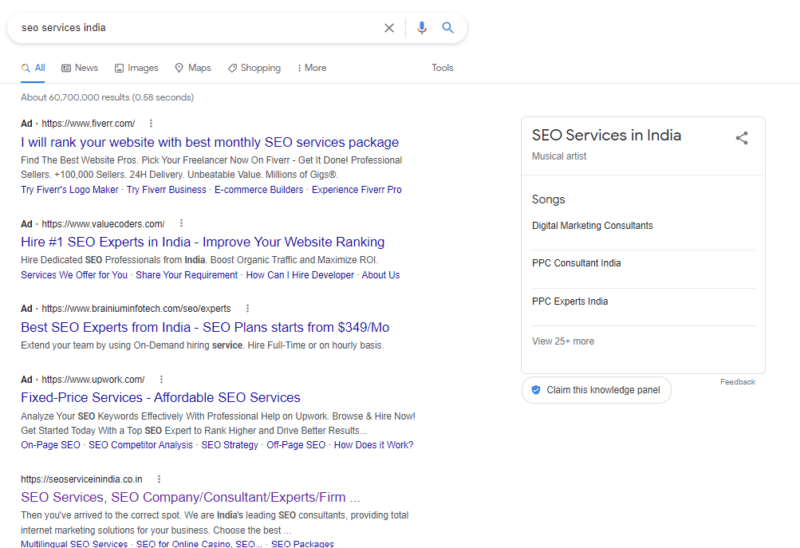
There it becomes clear that SoundCloud was used as the source for the entity detection. Websites such as SoundCloud or Wikipedia always present information in a consistent structure. This means that the information can be easily extracted from the websites without mark-ups.
How does Google create a knowledge panel?
The knowledge panels were first presented in the SERPs with the introduction of the Knowledge Graph in 2012.
In the Google patent Providing knowledge panels with search results, one finds the basic methodology and purpose of the knowledge panel. The purpose for users of a Search engine is described as follows.
“Knowledge panels can improve users’ search experiences, in particular for queries directed to learning, browsing, or discovery. For example, the knowledge panel supplies users with basic factual information or a summary of information about a particular entity referenced in a search query. Knowledge panels can assist users in navigating to related content in a seamless and natural way. Knowledge panels can supply new content that may not otherwise be encountered by a user without selecting several search results. Knowledge panels can also help users obtain information faster than they would if the users were required to click through multiple search results to obtain the information.”
Here is an excerpt from the patent on the methodology for delivering the knowledge panel:
“Methods, systems, and apparatus, including computer programs encoded on a computer storage medium, for providing knowledge panels with search results. In one aspect, a method includes obtaining search results that are responsive to a received query. A factual entity referenced by the query is identified. Content is identified for display in a knowledge panel for the factual entity. The content includes at least one content item obtained from a first resource and at least one second content item obtained from a second resource different than the first resource. Data is provided that causes the identified search results and the knowledge panel to be presented on a search results page. The knowledge panel presents the identified content in a knowledge panel area that is alongside at least a portion of the search results.”
The basic functionality when delivering a knowledge panel can be summarized in the following process steps:
- Identification of one or more relevant entities in the search query
- Identification of relevant sources for the main
- Creation of relevant search results regarding the search query
- Check whether the search query really refers to the actual main
- entity Determination of an entity type for the main entity requested
- Selection of a suitable knowledge panel template that matches the one determined Entity Type
- Identification of relevant content elements related to the main entity from a relevant and trusted source.
- Determination of another content element from another source.
- Filling of the placeholders in the selected knowledge panel template with the selected content elements.
- Merging search results and knowledge panel on one search results page
I find it exciting to realize that each entity type is assigned its own knowledge panel template with corresponding placeholders.
The entity type of the respective entity represented by a knowledge panel is always specified below the name of the entity. Depending on which standard attributes are assigned to the entity type and for which attributes the values are available, content is specified in the knowledge panel.
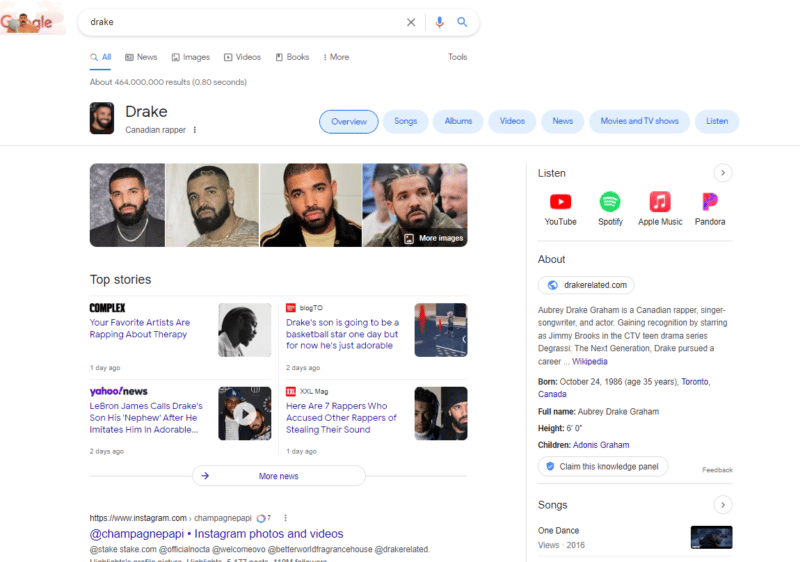
Example entity type “Canadian rapper” in musician Drake’s knowledge panel
How does Google generate images for the knowledge panel?
Regarding the question of which images are selected for the knowledge panel, I looked at some Google patents from the last few years.
Selection of representative images
This patent describes how Google could select representative images for entities of the type “person” for the corresponding knowledge panel.
The steps are as follows:
- Access a selection of possible images
- Cluster by similarity
- Identify the most popular clusters
- Determine whether the image is a portrait or not
- Assigna portrait score
- Select the most representative image
- Display the image in the knowledge panel
The selection of possible images as well as the clustering of these into categories is determined depending on the proximity to the entity as well as the aspect ratio. It will be very likely that machine learning methods are used. We get an idea of possible categories by looking at the image search.
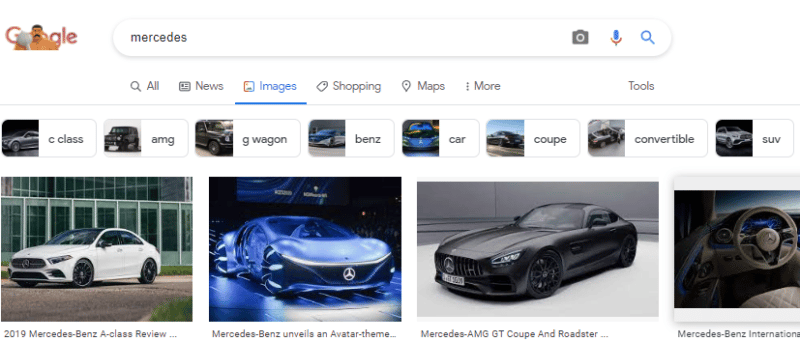
System and method for associating images with semantic entities
Another exciting Google patent related to images and entities describes how Google Images could assemble the images for semantic pre-selection.
“A system and computer-implemented method for associating images with semantic entities and providing search results using the semantic entities. An image database contains one or more source images associated with one or more images labels. A computer may generate one or more documents containing the labels associated with each image. Analysis may be performed on the one or more documents to associate the source images with semantic entities. The semantic entities may be used to provide search results. In response to receiving a target image as a search query, the target image may be compared with the source images to identify similar images. The semantic entities associated with the similar images may be used to determine a semantic entity for the target image. The semantic entity for the target image may be used to provide search results in response to the search initiated by the target image.”
In this patent, images are labeled with attributes. through which the images can be assigned to specific entities. These attributes are initially identified via image recognition of an initial image. Additional attributes are added via attributes of similar images and similar entities, presumably of the same type. This is how the meaning of the picture emerges.
These patents describe some approaches to how Google could specify images for knowledge panels. In my opinion, the source of the image is also decisive, which image Google selects the most relevant image for an entity and thus uses in the knowledge panel.
Popular sources for people’s pictures seem to include Wikidata, Wikipedia, Wikimedia, social media profiles (e.g., LinkedIn, Twitter) and well-known magazines. To what extent the ranking in the image search correlates with the selection of the image(s) for the knowledge panel is unclear.
The influence of the Knowledge Graph is growing fast
The influence of SERP features is increasing every year and with it the influence of the Knowledge Graph on the search results. The classic blue links are losing more attention and thus relevance.
Entities are at the center of the Knowledge Graph and will have an increasing impact on the SERPs.
With regard to voice search, SERP features such as featured snippets and knowledge panels also play an important role.
The changes in the SERPs due to the MUM update can already be seen, as can the increasingly central role of entity-based searches.
Therefore, SEOs should no longer perceive this topic as a “nice-to-have.” The Knowledge Graph should be included in your SEO strategies.
The post How Google creates knowledge panels appeared first on Search Engine Land.
from Search Engine Land https://ift.tt/zjLTYyS
via https://ift.tt/nIFJeZ5 https://ift.tt/zjLTYyS
Shiv Sena's Sanjay Raut Summoned By Enforcement Directorate For Tomorrow
Sunday, June 26, 2022
Watch: Elephant Rescued Using Excavator, Internet Says "Bravo"
Video Shows Girl Being Abused, Threatened By Man; Panel Issues Notice
"People Defeated BJP's Dirty Politics": Arvind Kejriwal On Delhi Bypoll
Aam Aadmi Party's Durgesh Pathak Wins Key Delhi Bypoll
AAP Leading BJP By Over 1,000 votes In 5th Round Of Key Delhi Bypoll
Saturday, June 25, 2022
Gurgaon Woman, 19, Shot At By Spurned Lover On Her Way To Work: Police
Delhi Sees Nearly 70% Jump In Covid Containment Zones In A Week
Ex Armyman Accused In Secunderabad Violence Case Arrested
Woman Dies As Tree Falls On Her Car While Driving In Chennai
Friday, June 24, 2022
7 Aborted Fetuses Found In Canister In Karnataka, Probe Ordered
3-Year-Old Boy Allegedly Sold For 1.30 Lakh In Jharkhand, Rescued: Cops
Talk To Rebels, Engage with Them: Shiv Sena Legislator To Sanjay Raut
Mukesh Ambani, Son Anant Donate Rs 25 Crore For Assam Flood Relief
'Agnipath': Varun Gandhi's Latest Barb Has A Question For Legislators
Why SEO must start with strategy, planning
SEO is ongoing. It isn’t a one-time thing.
Achieving the results you desire requires disciplined thinking and focus.
If you dive into the weeds too quickly, you may find that hours or days have passed and you’ve invested time into areas that may not have any real impact in the end.
While agility is key on an ongoing basis in SEO, it is equally important to have a solid strategy and plan upfront.
A strategy and plan, with a clear direction and baseline, allows for:
- Meaningful objectives to be set.
- Expectations to be managed.
- Adjustments to be made along the way.
Being both proactive and reactive (within a moment) is important, whether you’re working for yourself, your boss, or your clients.
Here’s why.
Goal setting
“What are your goals?”
This is the first question you should ask when someone reaches out for SEO help.
Define them. Document them.
Knowing what you need SEO to produce is critical. Goals are a critical filter for all strategic and tactical plans.
Goals could be:
- E-commerce sales.
- Leads.
- Pageviews.
- Specific types of engagement.
- Some other conversion or metric.
When you don’t know what the end goals are – and how to reach them – you can waste a lot of time and resources guessing or floating from SEO tactic to tactic.
Defining target audiences
You need to define who you’re trying to reach and how they search and behave online.
Once you do that, you can map out conversion paths, funnels, and ways to target and engage them.
In addition to knowing who you want to reach, it’s also critical to know the size of the net that you’re casting.
Sometimes, goals can be too big for the opportunity that SEO presents. Reaching a certain audience could be too ambitious. Or perhaps the competition is simply too great to get meaningful results.
Keyword research tools, industry/market research and sources within your industry can help you research and define your target audience, as well as with persona development.
Competitor research
When you know who your audience is and what topics and keywords map out to your conversion goals, you have a narrowed competitor landscape to review.
Dive deep into who owns the SERP real estate for terms and topics that you want to drive traffic to your site.
Use SEO tools to identify, set up monitoring and an ongoing plan to track the competitors. This will give you a reference point and can help you understand why they are ranking.
KPI definition
Goals and KPIs are not the same. Yes, you might have a single KPI that is tied to an end goal, but you can measure several data points that may be close to, or far away from, a conversion goal.
Don’t jump into your action plan before you define the KPIs that matter based on your goals, target audience, and funnels.
While average position and impressions might not be close to the end goal of a lead submission or e-commerce transaction, they are necessary to get there.
Define all the KPIs that matter. Put emphasis and priority on the ones that will be indicators and progress metrics versus those that are tied directly to the end goals.
Be consistent with them and map them out in advance.
Baselines and benchmarks
Using what you know about audiences, competitors and the KPIs that matter to you, it’s important to understand your current performance.
You want to objectively measure the return on investment and outcome of your efforts over time.
Now is the time to capture baselines of your own performance and benchmarks of how they stack up against the industry. Plus, we can compare them to our ultimate goals and see how far we need to go.
This can range from visibility through rankings and average position to impressions to visits and conversions. There are engagement metrics that you can look at as well as to how visitors are moving through defined funnels.
To get this data, you can use SEO tools or Google Analytics’ benchmarking report.
Be sure to document benchmarks. These metrics will become your baseline and define your starting point so you can evaluate your efforts in meaningful intervals going forward.
Reporting setup
Now it’s time to set up your reporting infrastructure. Whether you’re configuring Google Analytics to be your data source, leveraging Google Data Studio, or third party software, you want to get everything in order now.
Don’t wait until you’re off and running. In many cases if you don’t have clean data, filters, and segments, you can’t fix the details later.
There’s nothing worse than over or under counting and not being able to go back and correct it once you’ve gotten deep into your work.
Also, configure your reporting to show the starting points and how you’re tracking toward goals. The reporting should help you tie back to your efforts and gain insights to adjust your strategy as you go.
Strategy development
By this point, you should be ready to do some final initial auditing and strategy work.
A quick technical audit will help you understand how much work is needed to get the technical house in order when you start planning out the work. It will also help you understand how big that effort will be in terms of IT, code and site performance.
At the same time, you’ll want to know what kind of effort and strategy is needed for content.
Doing a gap analysis, going back to audience and competitor research data, and factoring out how much effort is needed to match and exceed competitors will be critical while also delivering exactly what your audience wants.
Use the auditing and reviews to develop a strategy and overall assessment of needs that will go into your tactical plan.
Tactical plan and schedule
By this point, a big picture roadmap should have started to emerge. You’ve identified and defined your big needs.
But you can’t do it all at once. How quickly you can reach specific goals will depend on your resources and pacing.
Now you need to plan the work, measure it and control the resources in a prioritized way. Put together a phased schedule and plan. All the while knowing there will still be a lot of unknowns as you go through multiple tasks, such as:
- Updating copy.
- Optimizing on-page elements.
- Digging deep into technical issues.
- Going through rounds of link building.
You must be proactive, not reactive. Drive an organized strategy and the needed tactics to achieve your plans.
Resource planning and roles definition
This step can happen earlier and/or throughout your planning process. Be careful not to get too deep into crafting the perfect strategy and plan without making sure you have the resources to pull it off.
Resources include:
- An SEO team.
- IT.
- UX.
- Content creators.
- Those that will be approving the work.
Your stakeholders are important, too.
Additionally, any hard costs in terms of vendors and tools shouldn’t be overlooked. These all factor into ROI and as well as how much they can enable or slow your plan and efforts.
Avoid overestimating. Also, make the case for more resources if you think your plan can’t deliver on the goals with your current resources.
Now is the time to have these conversations – not months or years into an effort.
The big idea
I would argue with anyone that SEO is best approached as an ongoing discipline that has proper balance between planned activities and the necessary agility that comes with constant search engine changes and fluidity of the web.
Yes, plans are subject to change – maybe even right after they are written and launched. However, the absence of a strategy and plan leads to a reactive approach and one that lacks efficiency, focus and prioritization.
Start with a strategy and plan. And revisit it on a regular basis.
Take this approach for every new initiative or client. It will make life easier!
The post Why SEO must start with strategy, planning appeared first on Search Engine Land.
from Search Engine Land https://ift.tt/aS2mgdx
via https://ift.tt/4sQILZ5 https://ift.tt/aS2mgdx
Veteran Odia Actor Raimohan Parida Found Dead At Residence
Do President, PM Need To Visit For Bengaluru Civic Agencies To Work: Court
Virtual environment optimization (VEO) is coming. Ready for it?
Virtual reality (VR) and augmented reality (AR) will impact the future of marketing.
Optimizing for the future of virtual marketing demands a name, which I am calling virtual environment optimization (VEO).
Today, we’re already starting to see the building blocks – and optimization potential – for this new technological world with the metaverse.
What is Virtual Environment Optimization (VEO)?
VEO is the task of working within a virtual environment and utilizing the resources available to best position the clients’ products and services within an alternative reality.
In search engine optimization (SEO), the focus is mainly on utilizing content, its best practices, and a slew of strategies to drive the clients’ website to the top of the search results. With the numerous changes in technology, it became necessary for SEO to adapt to areas such as voice search, map search, mobile search and much more.
Considering that there is another technology shift on the horizon with VR and AR, marketing will once again need to consider how clients’ products and services should be marketed in the metaverse or any virtual environment.
By coining the term VEO, we can start strategizing how to shift gears towards a more virtual environment for buying and selling products.
Why you should consider virtual optimization (VEO) now
Statistics indicate how VR and AR has progressed (and will continue to progress) over the next several years.
Currently, in listing the industries where VR is the most useful, marketing and advertising are listed at the bottom, with only 16%. This indicates that there is plenty of room for growth and improvement.
According to Finances Online, the top workforce development benefits of VR are as follows:
- Providing information in real-time.
- Facilitating training and mirroring in real-life experiences.
- Enhancing creativity in product design and development.
- Enabling a remote workforce to collaborate in real-time.
- Allowing users to live out someone else’s life experiences.
- Capturing novel user data like behavior and eye and gesture tracking.
In just 2020 alone, the combined markets of AR and VR were worth approximately $12 billion. By 2024, it is projected to jump with a large annual growth rate of 54%, resulting in a valuation of $72.8 billion.
Virtual reality is projected to change the shopping environment for consumers
Retail is the sector that is projected to deliver the largest commercial investment in AR/VR technology in 2024, with $7.3 billion, according to the International Data Corporation (IDC).
According to pymnts.com, the home try-on effect will be eliminated by 25% from the benefit of virtual store implementation. As of now, the average e-commerce rate is 2%.
With the help of VR, consumers can be influenced by their purchasing decisions. So much so that for 2022, VR statistics show that VR adoption in e-commerce can boost online shopping conversions by 17%.
Regarding shopping online, 61% of consumers would rather shop with AR experiences, and 40% would likely spend more on customizable items through AR.
Virtual products
When looking at how trends may be leaning toward using VR and AR to boost the clients’ visibility, Google is a perfect example. Already Google has worked towards virtual products as early as 2013, with the creation of the Google Glasses.
More recently, they have developed the Google Lens, a vision-based computing capability that allows you to “search what you see.” Using your camera, Google Lens will compare the object in the picture to other images and rank them on similarity or relevance. For instance, if you use Google Lens on a product such as jeans or sneakers, Google Lens can provide more information on the product, including the results available to purchase the product.
Consumer trends and how they have changed
As a result of the COVID-19 pandemic, online shopping saw a massive increase and changed the way people shop.
The commerce platform Kibo surveyed both millennials and Gen Z about their shopping habits. Out of both age ranges, 28% have admitted that they plan to continue online shopping even after the pandemic, as they prefer it over shopping in a physical store.
Lisa Kalscheur, Kibo’s CMO, claims that their research proves that people have started to move towards digital channels:
- “Retailers need to unify the customer experience online and off more than ever before. Consumer demand for convenience requires modern commerce and order management capabilities.”
Age is not necessarily a factor in the desire for online shopping.
For millennials, 53% of individuals between 25-34 would prefer to find out information about a store online rather than asking the in-store staff for help. The younger generation commonly referred to as “Gen Z,” is extremely focused on online shopping. Gen Z is sustainability-minded and wants to change and update its style constantly. This has led to more non-traditional shopping styles, such as renting clothes.
CEO of Rent the Runway, Jennifer Hyman, commented on the younger generation:
- “Gen Z lives their life in the cloud—their content, entertainment and music all exist in the cloud with unlimited choice. We are offering them the exact same thing for their physical lives.”
Trends are shifting towards a world where we spend more time online and in VR than ever before. It’s only a matter of time before marketing and commerce penetrate this realm.
In some cases (Nike and Ikea), they have already ventured into this space.
We must consider these factors and prepare for the future ahead of time.
What might optimizing a virtual environment look like?
The Metaverse offers a great example of the future of VR and marketing.
Meta had already taken the initiative to help users monetize on products.
In Horizons World – the company’s social metaverse platform – it will start to test “in-world purchases,” allowing Horizon creators to sell virtual items to enhance the worlds they’ve created for users. In addition, Meta hopes to focus on ads in the future of Horizons Worlds.
Aside from Meta, we can look at real-world sectors for optimizing virtual environments:
Groceries
Online grocery shopping has taken off, especially since the COVID-19 pandemic. A survey from eMeals indicated that 34% of individuals use delivery services to buy groceries online. CEO Forrest Collier said:
- “With 97% of respondents to our survey saying that they plan to continue using online grocery in the future despite order delays or cancellations, it’s likely that one of the lasting effects of this pandemic will be to accelerate the widespread adoption of online grocery.”
As a hypothetical example of VR grocery shopping, imagine virtually entering a Kroger’s. By putting on the VR headset and opening Kroger’s app, you would be transported into a virtual supermarket.
This virtual supermarket would be larger than any real physical store in the area and with much more inventory. As the user navigates through the store, they would be able to interact with the products –such as examining the packaging and nutrition panel and finally adding them to their cart.
Three students from UCLA conducted a study on VR and grocery stores. They attempted to draw as close of a parallel as possible to a traditional, in-store experience. They’ve imaged the following features using VR, with each step bringing the user to a more detailed viewing and interactive ability:
- General carousel view: All items would be categorized by columns and represented by a selection of groceries from that category, likened to one’s view when first entering the virtual store and viewing multiple aisles.
- Detailed shelf view: As if the user had walked down a specific aisle in a physical store, now with the ability to view all of the items within it.
- Product detail page – As if the item were to be selected for further inspection, this part would highlight the item-specific information which would appear on the product.
- Sandbox – This mode would allow the ability to manipulate immersive 3D assets and retain the ability to add it to the person’s VR cart. For example, if someone wanted a watermelon halved or quartered.
This then raises the question: how will marketers be able to compete for or determine who receives the “most visible” shelf space and placement of their product?
A virtual store equates to a much bigger inventory with more choices than ever before. The goal would be to ensure that the clients’ product gets more visibility rather than remaining “one in the crowd.”
Clothes and other product retailers
The future of VR and AR in clothing stores could result in each brand eventually creating its own unique virtual retail outlet.
In a virtual setting, consumers would be able to explore an incredibly large inventory, filtering based on style, season, brand, size, etc. There may even be a “virtual mirror” to utilize, similar to MTailor’s custom tailoring services using AR.
In terms of marketing, retailers moving towards the VR environment would mean figuring out how to compete for mannequins, maximum shelf visibility, placement of popular brands, popular items, etc.
Home goods
AR has already been implemented into the home goods sector. For example, an individual can use their phone to select items and test how they would appear in their home in real-time.
The benefit of VR marketing in a shopping environment is that groceries and all retailers will be able to save tremendous amounts of money by going virtual.
There will be the ability to cut down (or potentially even eliminate) the number of physical stores, necessary employees and all associated overhead.
In addition, there will be fewer brick-and-mortar stores, with large distribution centers for quick and easy delivery.
Virtual content will reign supreme
The phrase “content is king” has been used as a motivator for clients when planning content strategies for the creation of pages, blogs, videos, etc.
Now, as we start to enter a world of virtual reality, clients will have to shift to keep up with and produce virtual content where it is relevant.
Soon we will see Google begin indexing, crawling, and ranking web content based on the visual search results for AR-based content. As a result, SEOs will need to incorporate both augmented and virtual reality into their future content strategies.
Marketers will now need to devote more resources to visual content, such as infographics, videos and images. SEO-friendly content will make a client’s site more popular and help their visibility in the search results.
With augmented reality, customers would be able to go on a “virtual grocery store” shopping spree within a VR grocery retailer.
A virtual store is capable of housing more inventory than any brick-and-mortar location. It can be navigated and easily accessed by consumers.
Overall, enhancing your content with augmented reality and well-optimized content is a win-win for both the audience and search engines.
The benefit of AR is that both the brand and the customer provide content. This means consumers are more likely to participate in AR if they can add content in real-time.
As always, positive and engaging content is likely to have the greatest impact. As technology and trends continue to change over time, it is the responsibility of the marketing to shift their practices to stay up to date with the consumers’ needs.
VEO is coming. Will you be ready?
The post Virtual environment optimization (VEO) is coming. Ready for it? appeared first on Search Engine Land.
from Search Engine Land https://ift.tt/cKDHLts
via https://ift.tt/4sQILZ5 https://ift.tt/cKDHLts
Thursday, June 23, 2022
Dedicated Police Help Desk For Transgender Community Inaugurated in Lucknow
10 Dead, 7 Injured As Vehicle Carrying Pilgrims Falls Into Ditch In UP
College Student Attacks Mother With Knife, Stabs Sister Multiple Times
Wednesday, June 22, 2022
'Agnipath': Khaps In Haryana Threaten To Socially Isolate Those Who Apply
Punjab Man Cooks Up Fake Gunfire Story To Get Arms License
8 Killed, 7 Injured In Auto Rickshaw-Truck Collision In UP
BJP, Ally Combine To Win In 25 Haryana Municipal Bodies
Kerala Actor Vijay Babu Granted Anticipatory Bail In Rape Case
Tuesday, June 21, 2022
How A Cardiologist In Kashmir Is Saving Lives Virtually
Revamped Google News design goes live with top stories, local news and personalized articles
Google has launched the new version of Google News today on its 20th year anniversary of Google News. The new design, which we caught Google testing a month ago, brings forward Top stories, Local news and personalized picks to the forefront of the Google News home page, Google said.
Local news. You can now find a local news box at the top right of the Google News home page. It makes it easier for you to find local news from your community that matters to you. There is a new filter button to add multiple locations to your local news section, so you can find local news about communities you love but no longer currently live in. Google said this helps with local news publishers gain more exposure and traffic from Google.
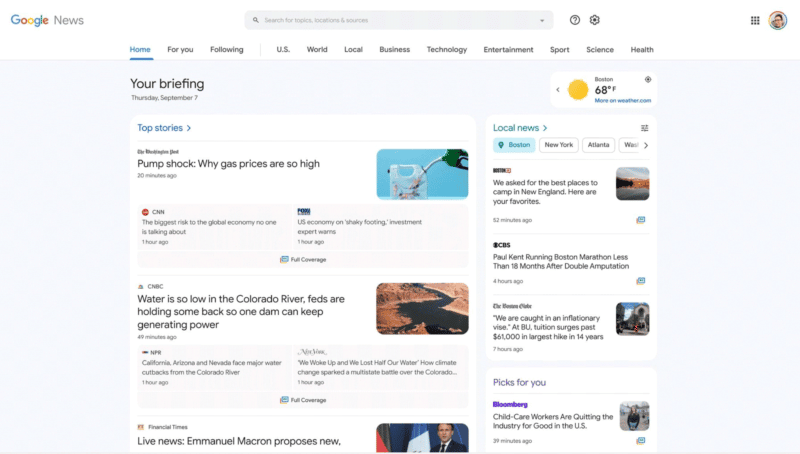
Customize Google News. You can now also customize the topics that appear in Google News for you by clicking on the customize button. There you can add, remove or reorder topics with the slider feature.

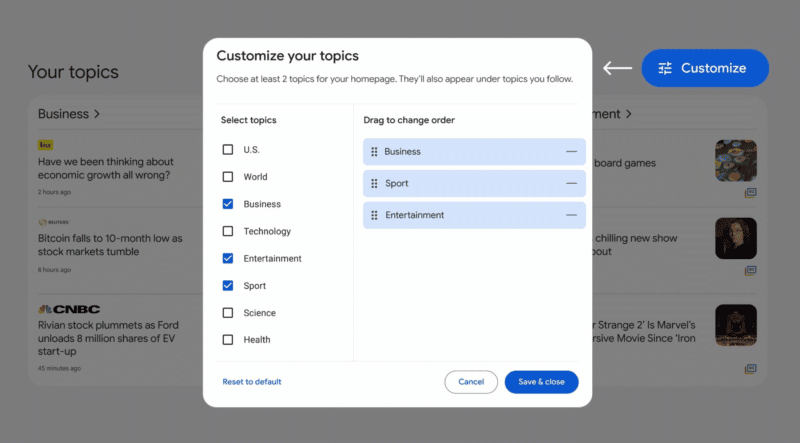
Improved fact check. Google has also improved the Face Check section in Google News by providing more context, the original claim, independent organization assessments, adding the About This Result and more.
Back in Spain. 8 years after Google shut down Google News in Spain due to Spanish law, Google has finally brought back Google News in Spain. We knew this was coming and today is the day where Google News works again fully in Spain. Google said “this is a result of a new copyright law and we hope that the return of Google News to Spain helps more people and more news, from more places, and helps publishers and new readers.”
Why we care. As we said when we saw the redesign test, whenever Google releases a new design or user interface in Google Search or Google News, that can impact ones visibility and clicks to their web site. So keep these user interface tests in mind when understanding any risks or rewards you might see in the future with Google News interface changes.
For those in Spain, they can now access Google News without any restrictions.
Also, Google News officially launched on September 22, 2002, so we are not exactly at the 20 year mark but close to it.
The post Revamped Google News design goes live with top stories, local news and personalized articles appeared first on Search Engine Land.
from Search Engine Land https://ift.tt/VdtNmkL
via https://ift.tt/cKV2ab5 https://ift.tt/VdtNmkL
UP Boy Sentenced To 20 Years For Raping 5-Year-Old Girl
HUD settlement changes the way Meta delivers housing ads
Meta has just announced a settlement with the US Department of Housing and Urban Development (HUD) that will change the way they deliver housing ads to people in the US.
The new method is called the “variance reduction system” and is designed to make sure the audience that sees the housing ads more accurately reflects the eligible target market for that ad.
In 2018 a lawsuit was filed against meta by the HUD alleging that Facebook violated the Fair Housing Act based on target options and delivery processes for housing ads.
Meta and HUD collaboration. The announcement comes after a year-long collaboration between Meta and HUD to develop processes for machine learning technology to ensure the age, gender, and estimated race or ethnicity of a certain population seeing ads.
Advertisers running housing ads currently have a limited number of targeting options to choose from while setting up campaigns – including age, gender, and zip codes. The new method builds on that same foundation in an effort to make progress toward a more equitable distribution of ads.
Saying goodbye to Special Ad Audiences. In 2019, Facebook introduced Special Ad Audiences as an alternative to Lookalike audiences for housing, employment, and credit cards. That feature is going away as Meta looks to expand the field of fairness in machine learning.
What Meta says. In their announcement, Vice President of Civil Rights and Deputy General Counsel Roy L. Austin Jr, said “We’re making this change in part to address feedback we’ve heard from civil rights groups, policymakers and regulators about how our ad system delivers certain categories of personalized ads, especially when it comes to fairness. So while HUD raised concerns about personalized housing ads specifically, we also plan to use this method for ads related to employment and credit. Discrimination in housing, employment and credit is a deep-rooted problem with a long history in the US, and we are committed to broadening opportunities for marginalized communities in these spaces and others.”
Read the announcement. You can read the full announcement here.
Why we care. Facebook has encountered many issues related to targeting in recent years. But Meta’s response to the lawsuit and its upcoming changes are a step in the right direction to preventing discrimination in housing.
The post HUD settlement changes the way Meta delivers housing ads appeared first on Search Engine Land.
from Search Engine Land https://ift.tt/VSluDJ4
via https://ift.tt/cKV2ab5 https://ift.tt/VSluDJ4
